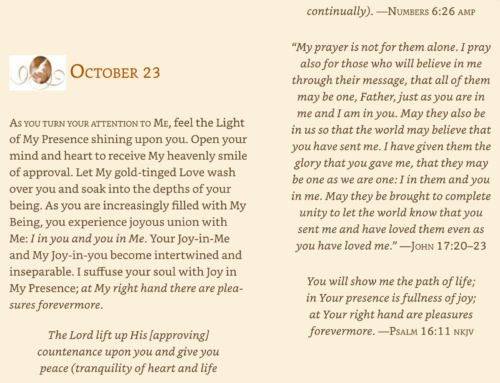A Nonviolent Love
Richard Rohr reflects on the spiritual foundations of nonviolence embodied and taught by Martin Luther King Jr.
Part of the genius of Martin Luther King Jr. (1929–1968), inspired by the teachings of Jesus and Gandhi, was that he was able to show people that violence was not only immoral but also impractical and, finally, futile. In the long run, violence does not achieve its own stated purposes, because it only deepens the bitterness on both sides. It leaves both sides in an endless and impossible cycle that cannot be stopped by itself. Instead, some neutralizing force must be inserted from outside to stop the cycle of violence and point us in a new direction.
King would insist that true nonviolent practice is founded on spiritual seeing. . . . He took it as axiomatic that the attitudes of nonviolence were finally impossible without an infusion of agape love from God and our reliance upon that infusion. He defined agape love as willingness to serve without the desire for reciprocation, willingness to suffer without the desire for retaliation, and willingness to reconcile without the desire for domination. This is clearly a Divine love that the small self cannot achieve by itself.
We must live in and through Another to be truly nonviolent. [1]
At a 1960 lunch counter sit-in protesting segregation in Arlington, Virginia, Quaker peace activist David Hartsough discovered God’s power in the power of nonviolence:
“Love your enemies . . . do good to those who hate you.”
I was meditating on those words when I heard a voice behind me say, “Get out of this store in two seconds, or I’m going to stab this through your heart.” I glanced behind me at a man with the most terrible look of hatred I had ever seen. His eyes blazed, his jaw quivered, and his shaking hand held a switchblade—about half an inch from my heart. . . .
I turned around and tried my best to smile. Looking him in the eye, I said to him, “Friend, do what you believe is right, and I will still try to love you.” Both his jaw and his hand dropped. Miraculously, he turned away and walked out of the store.
That was the most powerful experience of my twenty years of life. It confirmed my belief in the power of love, the power of goodness, the power of God working through us to overcome hatred and violence. I had a profound sense that nonviolence really works. At that moment, nonviolence became much more than a philosophical idea or a tactic that had once made a difference in Gandhi’s India. It became the way I wanted to relate to other human beings, a way of life, a way of working for change.
My response had touched something in my accuser. He had seen me as an enemy. But through my response, I believe I became a human being to him. The humanity in each of us touched. [2]
Nonviolence Is Power
Lifelong peace activist and priest John Dear curated the CAC’s forthcoming edition of Oneing on nonviolence, which features Dear’s interview with Methodist minister and activist James Lawson. After visiting followers of Gandhi in India to study nonviolent resistance in the 1950s, Lawson began training civil rights activists in the principles and tactics of nonviolence. His students helped desegregate lunch counters and became Freedom Riders who pushed to integrate interstate travel. In response to a question about how he defines nonviolence, Lawson offers:
It is hard to define nonviolence. I think it was Mahatma Gandhi (1869–1948) who first used the term. [1] He maintained, in his book Non-violence in Peaceand War, that the term is his translation of the Jainist theory of ahimsa. Gandhi translated ahimsa as “Do no harm; do no injury.” Jainism was an ancient religion of India, begun around the time of Jesus of Nazareth. That’s one definition I cling to. It allows me to live, to function, to practice.
Gandhi also stated that nonviolence is love in action, compassion and truth in action. Of course, he coined the word satyagraha [often translated as truth force or soul force] to further explain tenacity in truth, in the soul, in God, and in struggle.
So, for me, nonviolence is that quality that comes out of all the great world religions: the notion that the creative force of the universe is love, that God is love, and that love is all-encompassing. Gandhi insisted—and I think this is Gandhi’s great contribution—that the creative force of the universe is the force that we humans must learn to exercise because that force is the only force that can cause the human race to do God’s will.
And nonviolence is power. It is not, as I was taught in college in 1947, just persuasion. Persuasion is a form of power. Aristotle wrote that power is the capacity to achieve purpose. It is a God-given gift of creation to human beings. Nonviolence has its deep roots in the long journey of the human family as people operated out of love and truth despite all that was raging around them.
As Gandhi and Martin Luther King Jr. also said, nonviolence is the science of how we create our own life in the image of God, how we create a world that practices justice, truth, and compassion.
Gene Sharp (1928–2018) was the first scholar to pull together the science and the methodology of nonviolence. So, I have a two-fold definition. First, the religions of the world reflect on love as truth and power, as the way the human race discovers how to carry out the will of eternity. Second, we’re still learning about nonviolence as the science of bringing about personal and social change and establishing a world where all life is honored.
